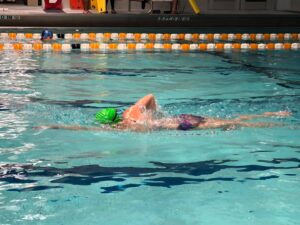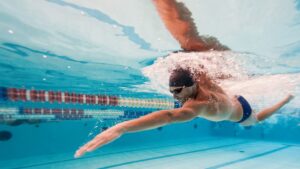
The Economy of Endurance Sports: Why Efficiency Matters
What Is Economy in Endurance Sports?
Economy is a critical performance metric in endurance sports like triathlon, and running. It represents the energy cost of maintaining a specific exercise intensity. In simple terms, economy measures how efficiently an athlete can perform a task with minimal energy expenditure. The less energy you use at a given output, the more efficient you are.
Think of it as metabolic efficiency—the less energy wasted, the more sustainable your performance will be. For example, if two cyclists both have a VO₂ max of 65 ml/kg/min, but Rider A uses 45 ml/kg/min of oxygen at 250 watts while Rider B uses 50 ml/kg/min, Rider A is more economical. Over long distances, also depending on their individual thresholds. Rider A will likely hold his power output longer before fatigue sets in. If you do blood lactate testing then overtime you want to see your lactate curve shift further right as your pace or power improves before reaching your threshold.
This same principle applies to running along with better form. A marathoner with a more efficient stride—avoiding overstriding, crossing arms, or unnecessary head movement—will consume less oxygen, maintain a lower heart rate, and fatigue less at the same pace. Economy directly translates into improved performance, especially in longer races where energy conservation is crucial.
Why the Off-Season Is the Best Time to Improve Economy
The off-season provides an ideal window to focus on economy. With reduced training volume and fewer competitions, athletes can dedicate time to refining technique, addressing biomechanical inefficiencies, and building efficient movement patterns.
It’s important to note that when you first adjust your technique, you may temporarily feel less efficient until your body adapts. This is why its also important to do this during your off season. With consistency, however, economy improves—making every stride, stroke, and pedal more effective.
Running Economy (RE)
Long-Term Adaptations
Running economy improves over time as you gradually increase training frequency and volume. Consistent aerobic training expands mitochondrial density, capillary networks, and fat oxidation, reducing reliance on carbohydrates at a given pace. Most of this training occurs below the aerobic threshold (Zone 2) with couple of times per week sessions near lactate threshold and higher (Zone 4 in a 5-zone model).
Hill Training
Hills are one of the best tools to develop running economy. They strengthen muscles, improve VO₂ max, and enhance stride mechanics with a lower injury risk compared to flat sprints. Uphill running recruits more muscle fibers, engages the core for stability, and encourages powerful arm action—leading to better overall form.
Barefoot Strides and Drills
Barefoot strides on grass or turf help improve natural stride mechanics and reduce ground contact time. Strides (10–20 seconds or ~100m at mile-to-5K effort) provide neuromuscular benefits without creating fatigue. They can be done before or after workouts nearly every day.
Plyometric drills—such as bounding, skipping, and single-leg hops—further enhance tendon elasticity and reactive strength.
Sprint and Neuromuscular Training
Even for distance runners, sprint training is invaluable. Short hill sprints (6–8 × 8 seconds with full recovery) and flying 30–60m sprints improve fast-twitch recruitment, CNS stimulation, running mechanics, and elastic energy return. This expands your pace range, improves finishing speed, and delays fatigue in long races. Distance athletes should aim to include sprinting between once per week to once every three weeks.
Running-Specific Strength
Plyometric and strength training tailored for runners increases power and reduces ground contact time. Having a coach or biomechanical expert review gait can also identify inefficiencies to improve stride economy. We will explore strength training at the end of this.
Swim Economy
Many of the same concepts mentioned for running can also be applied in similar manners appropriate in these next sections for swimming and cycling. Swimming is the most technique-driven of the three disciplines, making economy crucial. You’ve probably seen inefficient swimmers thrashing and chomping at the water. Efficient swimming depends on mastering:
- Streamline
- Balance
- Rotation
- Breathing
- Catch & Pull
Streamlining is important for triathletes because it sets your body up in a proper position. Every time you come off the wall there should be a good push off with both feet, overlaying your hands above your head with your biceps tucked between your ears.
Balance is the foundation—holding proper body alignment keeps hips high and reduces drag. Drills like floating, side kicking with a snorkel, and core stability work all help develop balance.
Rotation during the swim is important as it helps you cut through the water like a fish or as close to a fish as you will ever be. Imagine yourself swiveling on an axle teetering back and forth no more than 30-40 degrees. Your hips and shoulders should rotate together and if we can see your belly button is facing the side of the pool then you’re rotating too much. A few drills you can practice to help with rotation.
- Side kick
- 6 kick switch
- All sides of kicking. Rotate through kicking on your front, sides, and back.
Breathing is obviously going to be a critical component for swimming. To breathe while swimming a common error is athletes will lift their heads up too high or they will rotate too far. When you lift your head too high, this causes the hips to sink and when you rotate too far this can cause a host of balance issues and technical errors such as scissor kicking and arms crossing over the midline. When you breathe you want to practice keeping your head down when you turn to breathe. Your neck should also stay line line with your cervical spine as you rotate to breathe. You should look approximately to your 3 or 9 o’clock with only one eye out of the water. As you keep your head down and take a stroke you’ll create a bow wave creating a pocket for you to breathe without getting a lot of water in your mouth. If you fail to keep your head down you’ll lose this bow wave making breathing more difficult than it needs to be, inhaling a lot of water.
The catch and pull is one of the hardest and most complicated pieces for triathlete swimmers to get down, especially those who did not come from a swim background as it takes great strength and flexibility. To set yourself when you take a stroke your hands should enter about 95% of maximum extension then as the enter the water extend and reach even further, with your elbow just above your wrist. One of the most common errors I see is swimmers taking too short of a stroke entering just by their ears.
Once you’ve mastered taking long strokes. You can work on your catch and pull. Having a strong pull is what will give you the most power and speed in the water. While every bit of the freestyle matters, the pull is where most of the work happens. A good pull doesn’t need to be complicated. Imagine your arms as paddles and your goal is to push as much water backwards as you can with your hands and forearms past your hips, so that you can move forward.
There are two main parts to the pull. The first is the set up. After your hand enters the water (in line with your shoulder), you need to get into a high elbow catch, so to speak. The high elbow catch puts you in a position of power and your elbow needs to remain above your wrist as you enter the water and start to catch. To imagine a high high elbow catch you use the common analogy of trying to wrap your arms over a barrel and getting your finger tips down and vertical as quickly as possible. Then comes the power phase, a strong fast pull past your hips that pushes the water back and drives you forward. Get this down and you’ve got a great pull.
The pull uses almost every muscle in your body including, your chest, lats, and teres major doing most of the heavy work in the middle of your stroke. As you finish the pull, your triceps kick in to help you push through past your hips. Meanwhile, muscles like your deltoids, rhomboids, traps, and rotator cuff play a role in keeping your shoulder stable and your arm in the right position. They make sure you can hold good form and get the most efficiency out of your stroke, similar to the glute medius, and abductor muscles for running.
Cycling Economy
The Importance of Bike Fit
Cycling economy begins with proper bike fit. You’ve probably all seen riders on bikes with poor fits, or their frame size was too large or too small. The correct frame size and adjustments not only increase comfort but also reduce wasted energy. With integrated head tubes limiting adjustments on modern bikes, getting the fit right from the start is critical. I often recommend that riders get a pre-bike fit first, since frame sizing varies across brands and each person has unique anatomical features. When it comes to sizing, it’s not just about inseam length — factors such as torso, forearm, and wrist length, shoulder width, and lumbar and hamstring flexibility all play a role. You want your bike to fit you and not the other way around for maximum gains in efficiency that include aerodynamics and comfort.
Training and Drills
Consistent riding remains the most effective way to improve cycling economy, it’s often not flashy but the mundane consistent riding.
Specific drills include:
- Single-leg pedaling – smooths the pedal stroke by eliminating dead spots.
- High cadence work – improves neuromuscular efficiency while balancing force and cardiovascular cost.
- Low cadence, high resistance (hill reps) – builds muscular strength for pushing bigger gears. Example: 5–6 × 5 minutes at 50–60 RPM in a large gear.
- Bike handling drills – practicing turns, bottle grabs, figure-8s, and obstacle hops builds confidence and efficiency, especially important for technical courses.
Triathletes should also spend significant time in the aero position to maximize comfort and efficiency in race conditions.
Strength Training for Economy
I know it can be challenging fitting in a minimum of two strength sessions per week but strength training is also important for improving economy and it should be done year round. Strength training is a powerful catalyst for improving the economy across swim, bike, and run. It enhances muscle fiber recruitment, neuromuscular coordination, joint stability, and elastic energy return.
Effective strength programs include multi-joint, sport-specific movements such as single-leg squats and core work, combined with lateral and stability training to target supporting muscles often neglected in linear endurance sports.
Research supports its benefits: Jung (2003) found trained distance runners improved running economy by up to 8% after resistance training. For a 3-hour marathoner, that could mean a 14-minute improvement.
Final Thoughts
Improving your economy is one of the most impactful ways that you can enhance endurance performance. By refining movement, reducing wasted energy, and strengthening key systems, athletes can perform faster, longer, and with greater efficiency in all three triathlon disciplines—swim, bike, and run.

William Ritter, from Tyler Texas, enjoys working with athletes that are looking to improve their performance in triathlon or running. He specializes in coaching triathletes and runners of all abilities. Ritter’s coaching is extensive and focused on the individual athlete, blending the art and science of coaching. Ritter is the Head Coach at Fly Tri Racing with over 15 years of coaching experience and 30 years of competitive experience. Coach Ritter is a USA Triathlon Level II Short & Long Course Coach, USA Triathlon Level 1 Youth & Junior Coach, USA Track & Field Level III Endurance & Youth Coach and USATF Cross Country & Marathon Specialist. Including a TrainingPeaks Level 2 and Power Certified Coach, Ironman U, Tri Sutto Coaching Certified, USA Cycling Coach.



